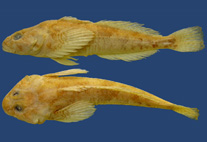Abstract
A new approach to inventory Diptera species in tropical habitats is described. A 150 x 266 m patch of cloud forest at Zurquí de Moravia, Costa Rica (10.047N, 84.008W) at 1585 meters asl was sampled with two Malaise traps for slightly more than one year (Sept. 12, 2012–Oct. 18, 2013). Further concomitant sampling with a variety of trapping methods for three days every month and collecting during a one-week intensive "Diptera Blitz", with 19 collaborators collecting on-site, provided diverse additional samples used in the inventory. Two other Costa Rican sites at Tapantí National Park (9.720N, 83.774W, 1600 m) and Las Alturas (8.951N, 82.834W, 1540 m), 40 and 180 km southeast from Zurquí de Moravia, respectively, were each sampled with a single Malaise trap to allow for beta-diversity assessments. Tapantí National Park was sampled from Oct. 28, 2012–Oct. 13, 2013 and Las Alturas from Oct. 13, 2012–Oct. 13, 2013. A worldwide group of 54 expert systematists are identifying to species level all 72 dipteran families present in the trap samples. Five local technicians sampled and prepared material to the highest curatorial standards, ensuring that collaborator efforts were focused on species identification. This project, currently in its final, third year of operation (to end Sept. 1, 2015), has already recorded 2,348 species and with many more yet expected. Unlike previous All Taxon Biodiversity Inventories, this project has attainable goals and will provide the first complete estimate of species richness for one of the four megadiverse insect orders in a tropical region.
Considering that this is the first complete survey of one of the largest orders of insects within any tropical region of the planet, there is clearly great need for a consistent and feasible protocol for sampling the smaller but markedly more diverse smaller insects in such ecosystems. By weight of their species diversity and remarkable divergence of habit, the Diptera are an excellent model to gauge microhabitat diversity within such systems. Our model appears to be the first to provide a protocol that can realistically be expected to provide a portrayal of the true species diversity of a megadiverse order of insects in the tropics.

